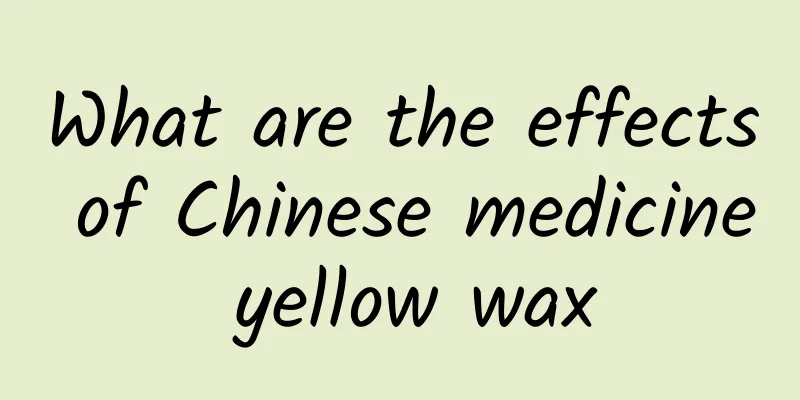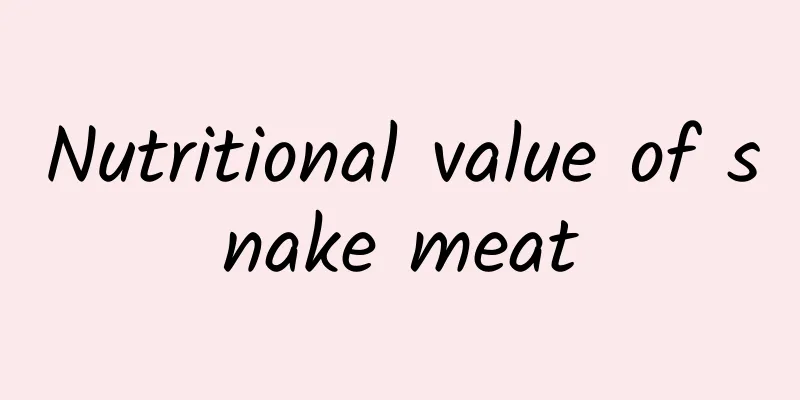What are the effects of Chinese medicine yellow wax

|
A few days ago, I heard my husband chatting with his friends about the effects of the traditional Chinese medicine yellow wax. I had never heard of yellow wax before. At first, I thought it was the same as candles. Then, everyone talked about what they knew about yellow wax. Gradually, I got to know what yellow wax was. I couldn't help but smile to myself. I believe that there are friends who don't know what the traditional Chinese medicine yellow wax is like me. What are the effects of yellow wax? I will tell you what I heard right away. Yellow wax is made by squeezing out the honey from beehives and then boiling it in water. It has the effects of astringency, sore-healing, tissue regeneration and analgesia. It is used to treat ulcers, trauma, burns, scalds, etc. The Chinese medicinal material yellow wax is also called "beeswax"; it is also called: Huangzhan; wax; honey root; beeswax; white wax; the Chinese medicinal material beeswax is the wax secreted by the Chinese honey bee, an animal of the Apidae family, and is artificially refined into a block. In spring and autumn, remove the honey from the honeycomb, heat it in a pot of water to melt it, remove the foam and impurities on the top, and filter it while it is hot. The effects and functions of yellow wax: detoxification; tissue regeneration; dysentery control; hemostasis; pain relief. It is mainly used to treat carbuncle on the back, ulcers, diarrhea with pus and blood, acute heart pain, chronic diarrhea, spermatorrhea, leucorrhea, and bleeding due to fetal movement. The main components of beeswax are esters formed by higher fatty acids and higher monohydric alcohols. The chemical composition of beeswax varies slightly depending on the bee species and origin. The main chemical components are: carbohydrates 14%, monoesters 42%, diesters 14%, triesters 3%, hydroxymonoesters 4%, hydroxypolyesters 8%, acidic polyesters 1%, free acids 12%, and other substances 2%. In addition, beeswax also contains carotenoids, vitamin A, a small amount of aromatic substances, pigments and trace elements. Natural beeswax can be eaten and used as medicine According to traditional Chinese medicine, beeswax is sweet and light in taste, neutral in nature, and enters the lung, stomach, and large intestine meridians. It has the effects of detoxification, pain relief, skin rejuvenation, diarrhea and hemostasis. Shennong's Herbal Medicine describes: "Beeswax tastes sweet and slightly warm. It cures diarrhea with pus and blood, nourishes the middle, heals wounds, replenishes Qi, and prevents hunger and aging." Compendium of Materia Medica states: "Honey is made from wax. Of all the things in the world, nothing is sweeter than honey and nothing is lighter than wax. It must be thicker than one and thinner than the other. Honey has a thick aroma and belongs to Yin, so it nourishes the spleen; wax has a thin aroma and belongs to Yang, so it nourishes the stomach. The thick one tastes sweet, has a slow nature and a soft texture, so it moistens the lungs; the thin one tastes light, has a stingy nature and a hard texture, so it stops diarrhea." Pure beeswax is a traditional Chinese medicine. It can be mixed with other traditional Chinese medicine ingredients and made into Chinese medicine pills for oral administration. It can also be directly decocted with food, such as scrambled eggs. It can effectively treat bronchitis, chronic bronchitis and various tuberculosis. Pills made from traditional Chinese medicine need to be made into a shell with beeswax to protect their quality. According to physical evidence, it is made of pure beeswax. The above content is an introduction to the effects of the traditional Chinese medicine yellow wax that I know about. As for traditional Chinese medicine, we are now exposed to too little. Many friends just heard that traditional Chinese medicine is effective and go to take it themselves. This is unscientific. Most traditional Chinese medicines have strict dosage requirements. Taking too much will harm the body. What's more, we are not Chinese medicine practitioners and cannot determine whether these medicines have adverse reactions. If you want to take Chinese medicine, you still have to find an authentic Chinese medicine practitioner to prescribe it. |
<<: What is the medicinal value of palm seeds?
>>: What are the traditional Chinese medicines for lowering creatinine?
Recommend
Once a jay hides its food, does it really remember it?
The sower in the forest - Jay The jay belongs to ...
The efficacy and function of tea oil
There are many kinds of common Chinese medicinal ...
Guangzhou Municipal Economic and Trade Commission: The total amount of online shopping in Guangzhou in 2011 exceeded 15 billion yuan
Recently, Guangzhou Municipal Economic and Trade ...
I am not him, how can I share the joys and sorrows? New research reveals the neural mechanism of empathy
Good communication is often based on empathy and ...
What are the medicinal values of Polygonum multiflorum
Polygonum multiflorum is a traditional Chinese me...
The efficacy and side effects of drinking Astragalus and Hawthorn in water
Talking about Scutellaria baicalensis, everyone s...
The efficacy and function of Fenghuacao
Fenghuacao is a very familiar medicinal herb with...
The efficacy and function of saponins
We can often see water soap beans in our daily li...
What is it like to have a good figure? Let's meet this "water bird model"
What is it like to be in good shape? Probably amo...
Excessive sun protection will affect the synthesis of vitamin D and cause osteomalacia? Dermatologists say
Excessive sun protection can cause rickets! Recen...
The efficacy and function of fine vine
Do you know what Xiluzivine is? It is a kind of t...
Red Yeast Rice Capsules
Nowadays, many elderly people are not in good hea...
A 20-year-old college student was blown into the ICU by the air conditioner! The recent high incidence! Doctors urgently remind...
It is said that "Summer's life is given ...
Are ketogenic diets, intermittent fasting, probiotics, and fecal microbiota transplants effective?
The more fat you are, the more health risks you w...









